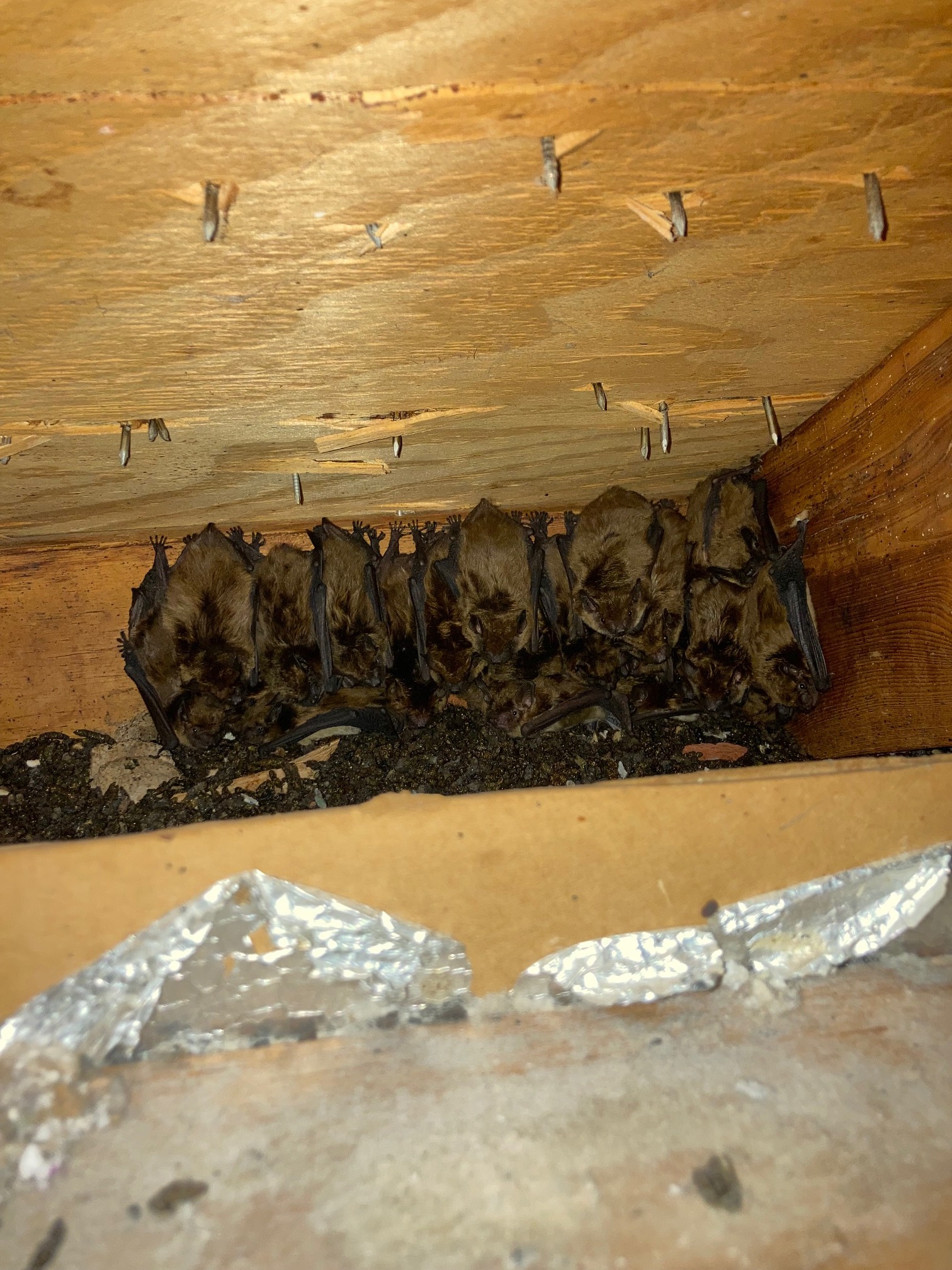
How to Get Rid of Bats from the Walls
Bats usually enter a home in search of a safe place to give birth and raise their young. The space behind your wall provides an ideal location for bats to roost. The ideal conditions for a bat roost are dark, secluded, and humid.
How Do Bats Get Inside the Walls?
Bats find entry points around the roof. They can squeeze through a gap as small as 3/8ths of an inch about the size of a dime. Theses gaps can be found at soffits, attic vents, gable vents, ridge vents, fascia boards, window sills, and eaves. Once the bats are inside the attic, they find their way into wall cavities.
Signs of Bats in Walls
The most common sign of a bats behind the walls are noises. You might hear chirps, scratching noises, or rustling.
Another common sign is a strong odor of ammonia. Bats defecate where they roost so bat droppings will pile up inside the wall. This can also lead to stains seeping through your walls.
Problems with Bats in Walls
Bat infestations aren’t a direct threat to people. Bats won’t fly into your hair, and they very rarely fly into the living space. But you should not ignore them! A colony of bats can return to the same roost year after year.
Bat noises can disrupt your peace of mind, but guano can cause problems to your home and your health. Bat droppings can destroy the wall. The acidity will eat away at the wall. The feces can impact your health. Histoplasmosis is a respiratory condition that is from a fungus that grows in guano.
Dead Bat in the Wall
A bat in the walls may become stuck. This is especially common for young bats, young bats fly after three months. If left alone, trapped bats often starve and die in wall voids, attracting rodents, cockroaches, and other pests with the smell of decay.
Maternity Colonies and Juvenile Bats in Wall Voids
Maternity colonies are established in late spring and early summer depending where you live. Female bats give birth, and juveniles are totally dependent on their mothers. They cannot fly until about three months after birth. In most states, you cannot implement bat removal until the young can fly. If you were to seal off your house, the juvenile bats would be stuck inside the walls
Residents should avoid bat-proofing homes from May to July.
How to Get Bats Out of the Walls
Bat in Walls Removal
Find a Critter Control near you
A full home exclusion with a bat valve is the most humane way to get bats out. Attempting to seal entrances without removing all bats first can also push the pests into other areas of the home. Bats without an exit route are more likely to find their way into living spaces looking for a way out.
Bats in Wall Removal
A bat valve allows for bats to exit your home but not re-enter. Since each bat removal is unique, our specialist will use or create a bat valve specifically for your home. At Critter Control, our bat removal service starts with a full inspection of the entire house to identity every and any bat entry point.
Once the bat valve is installed, all other bat entry points will be sealed, allowing for bats to only exit through the valve. The removal process typically takes 3-7 days. Our specialist will perform a final attic inspection before removing the valve. After removing the valve, the final entry point will be sealed, leaving your home bat-free.
We follow all local and national laws and regulations when performing bat removal.
- Keep in mind that many states have regulations in which bat removal cannot be performed during the maternity season. Call a Critter Control Professional for details in your state.
What Not to Do During Bat Removal
Because of the threats to bat populations and specific laws and regulations, we do not recommend DIY bat control. If you chose to try to get rid of the bats yourself, here are some recommendations on what not to do.
- Do not try deterrents or repellents. There are no products on the market that have any proof they effectively work at getting a bat out of your house.
- Do not poison bats! There is no legally approved toxicant for bat extermination. Bats provide an essentially utility to the ecosystems, and bat populations are under threat from white nose syndrome.
- Do not hold a bat with your bare hands. Bats are covered in their own feces and are the leading rabies vector in the United States
Learn more about bat removal.
Get them out.
Keep them out.®
Experiencing a wildlife or pest issue? We can help! Complete this form and your local Critter Control® office will contact you to assist.
- Baby Bats
- Bat Bites
- Bat Facts & Myths
- Bat Guano – Identification & Removal
- Bat Maternity Season
- Bat Noises and Sounds
- Bats & Rabies
- Watch How Bat Removal Works
- What to Do if Bats in Homes
- Bats in Chimneys
- Bats in Roofs
- Bats in the Attic
- Bats in Trees
- Dead Bats
- Bat Diet & Feeding Schedule
- Do Bat Deterrents Work?
- How to Get Rid of Bats in Attic
- Is bat exterminating legal?
- Do Bats Hibernate?
- Types of Bats
- What Does a Bat Look Like?
- Bat Habitats and Infestations
- Bat Blindness & Echolocation